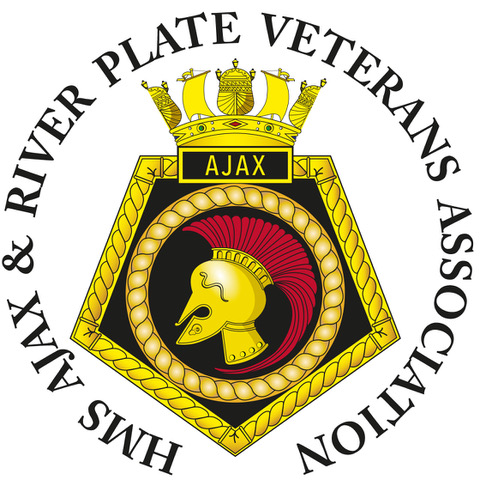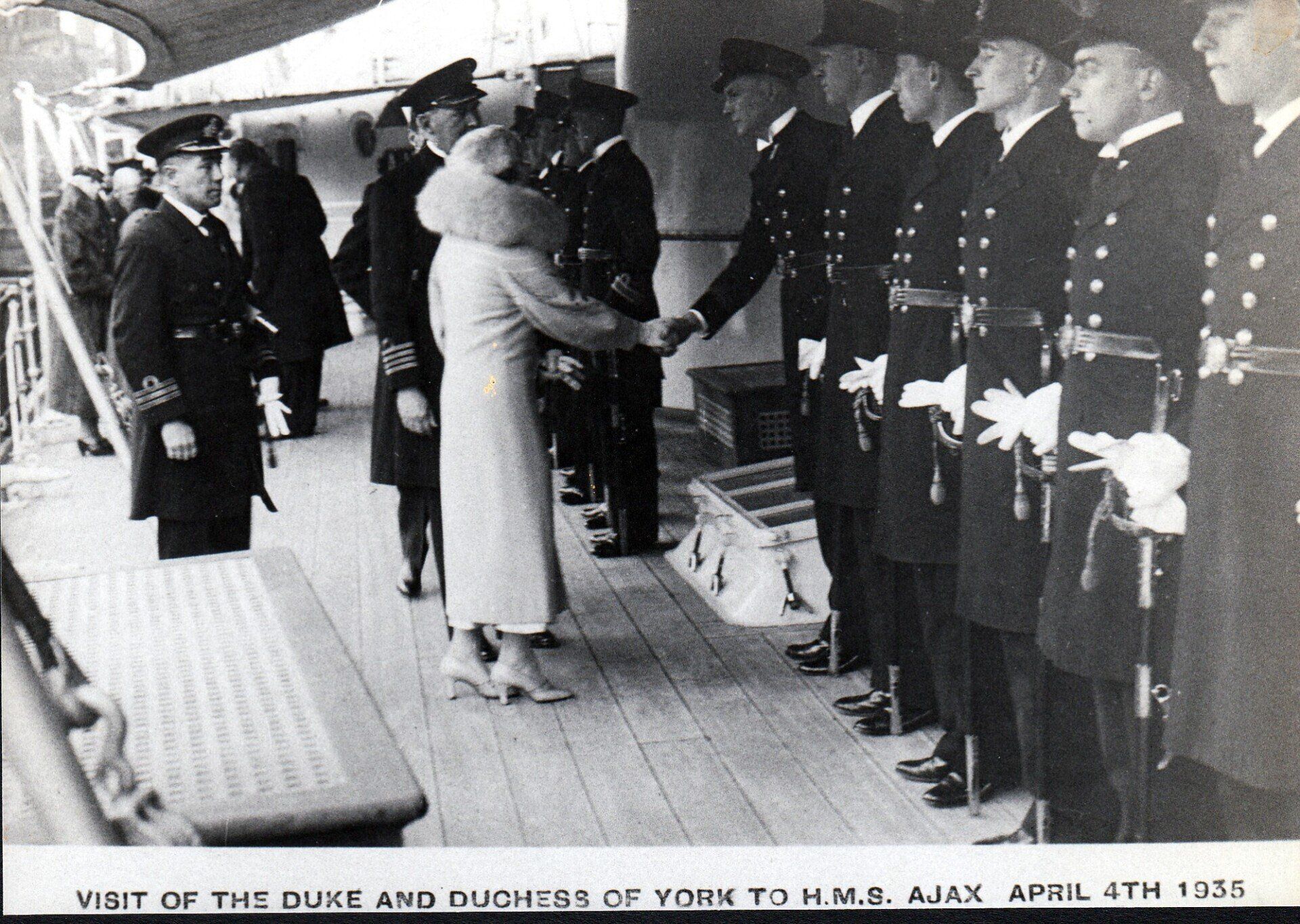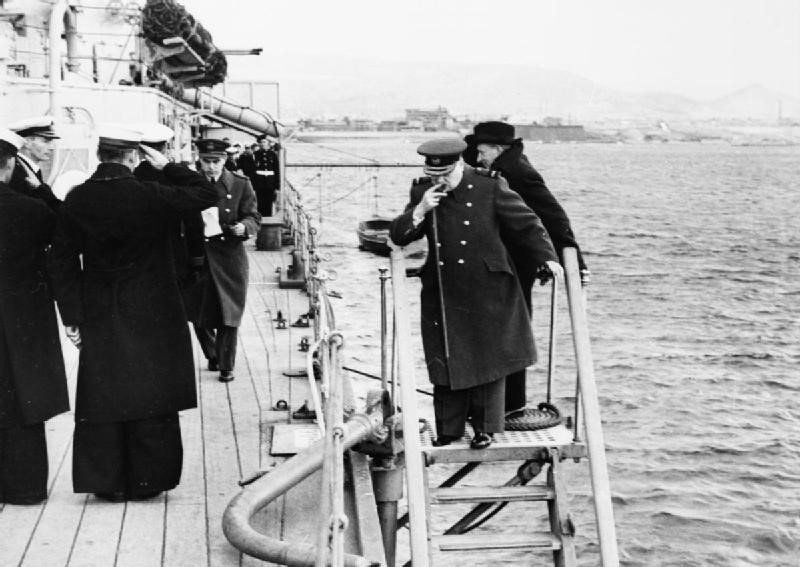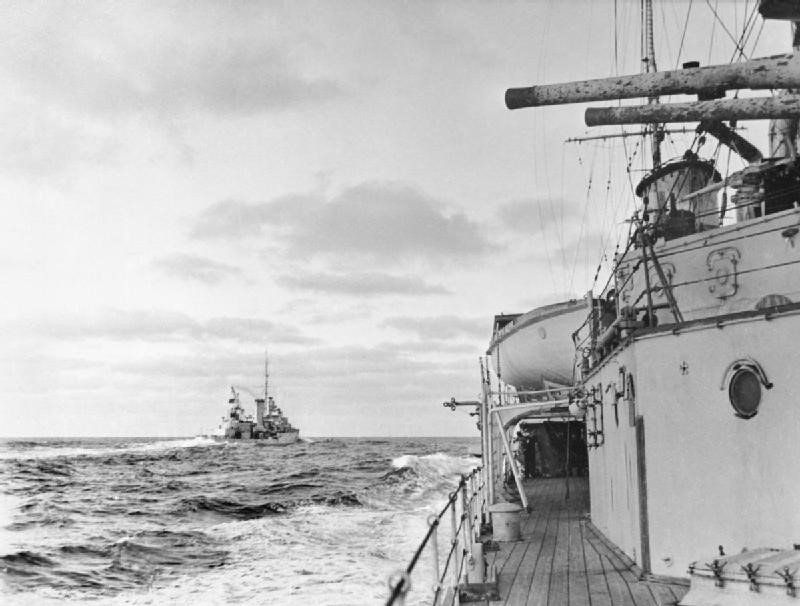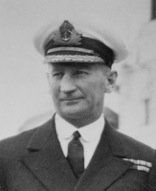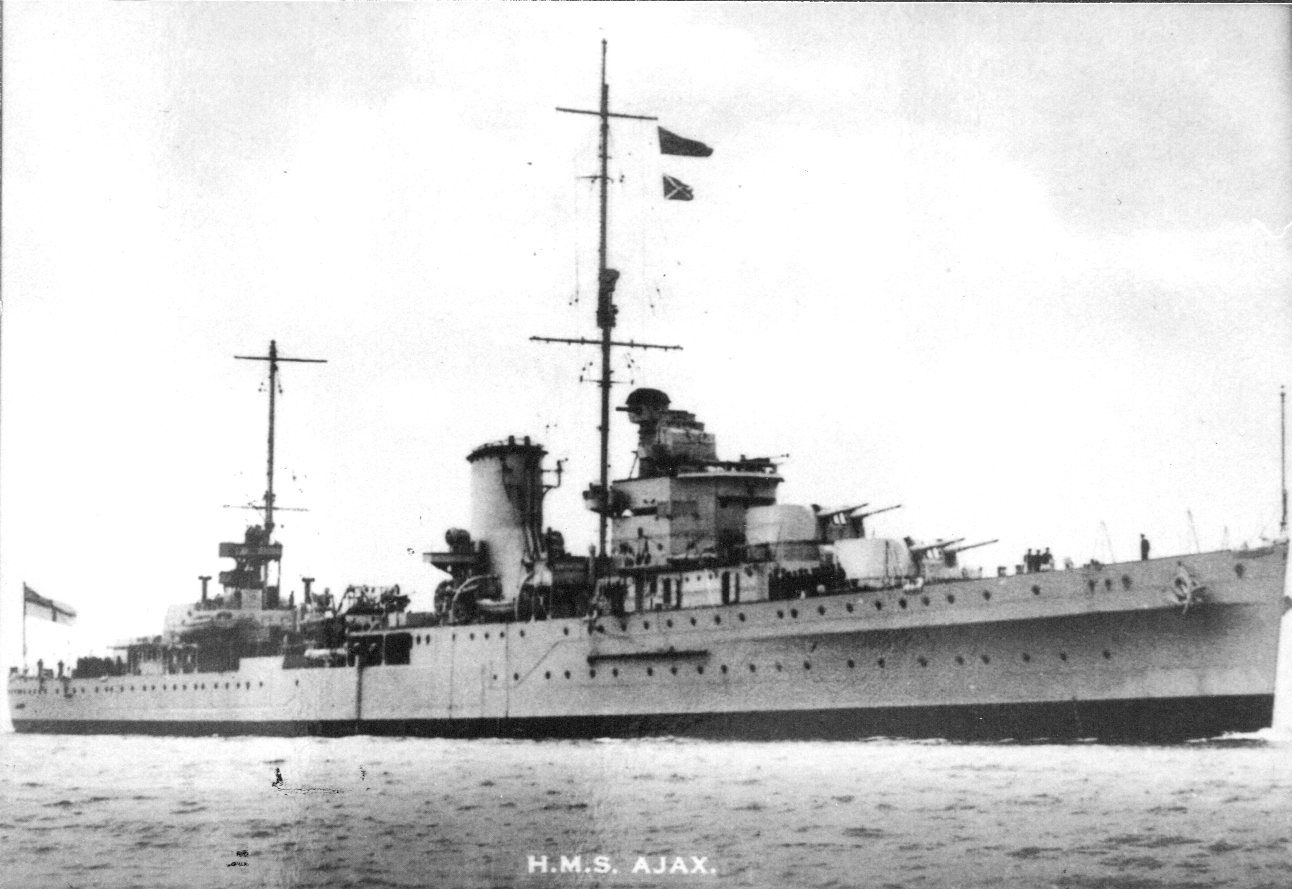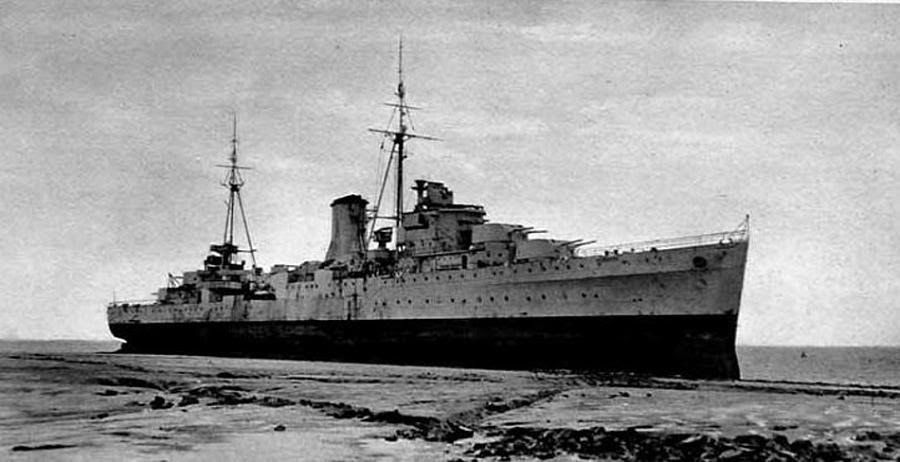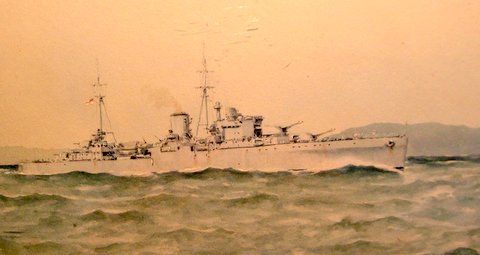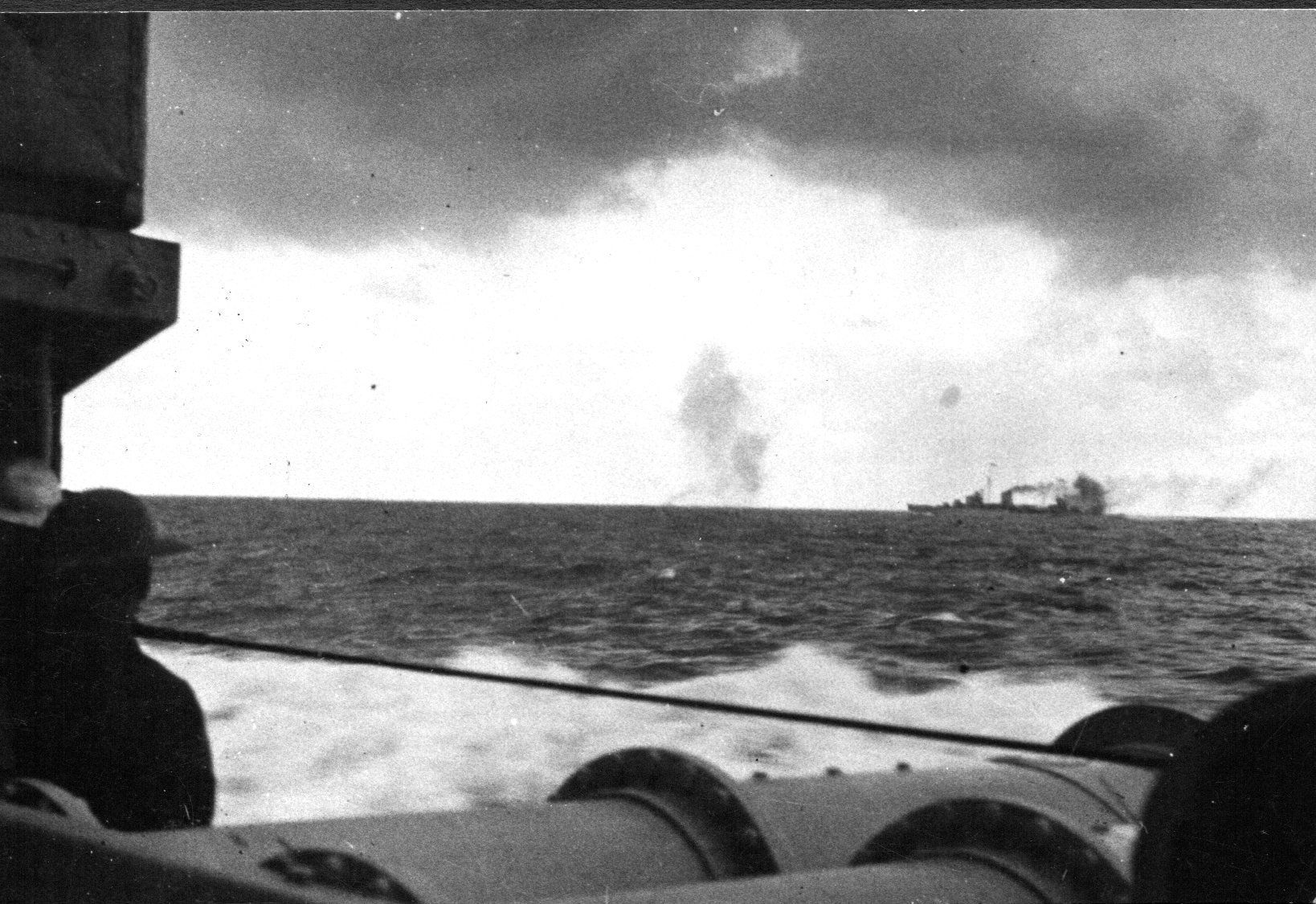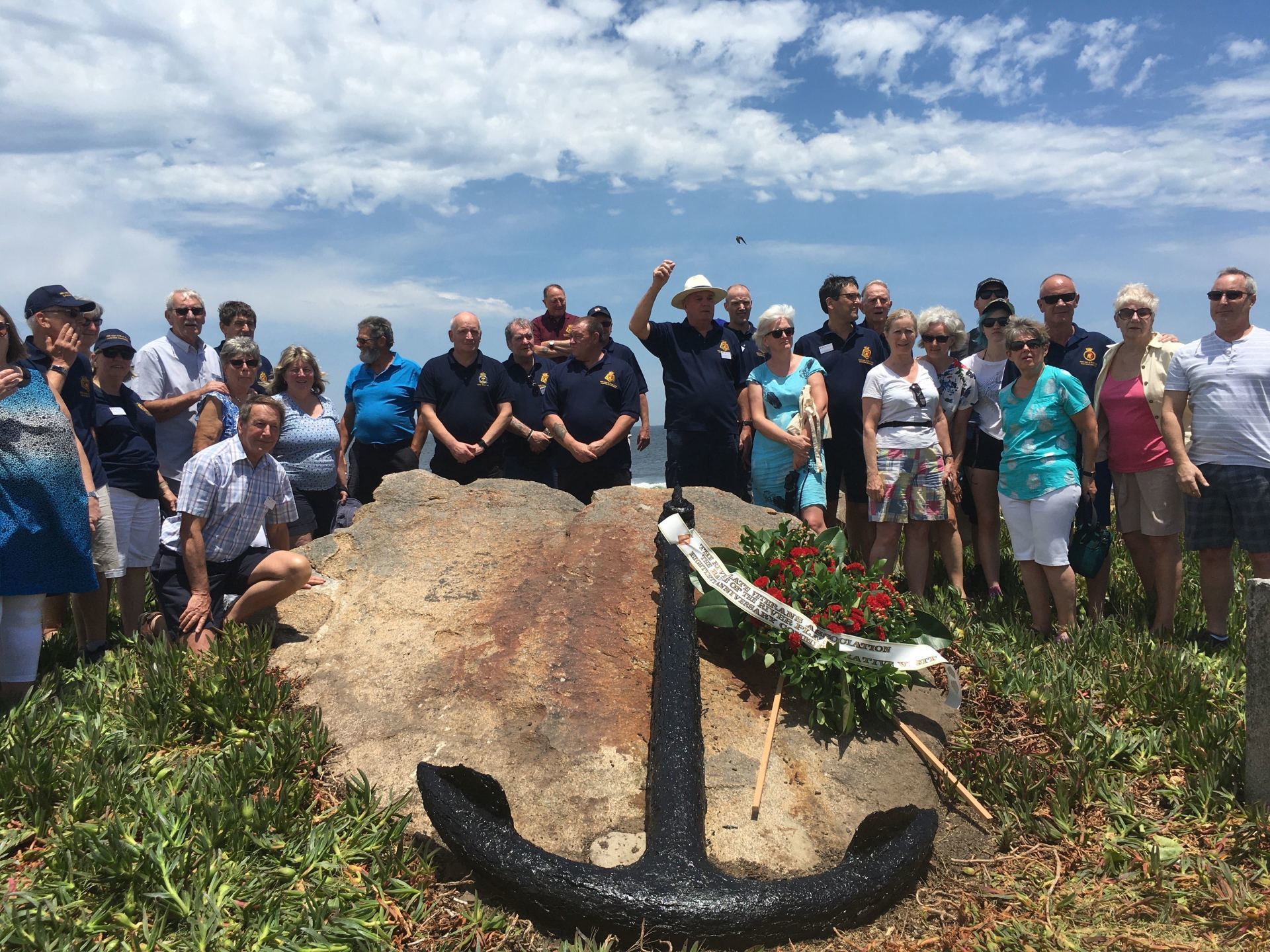HMS AJAX – by Jonathan Harwood, Grandson of Admiral Henry Harwood
A Leander class light cruiser, 7,500 tons, built by Vickers-Armstrong in Barrow-in-Furness, she was launched in 1934, commissioned in June 1935 and based at Portsmouth. She was the seventh in the Royal Navy to bear the name Ajax. Her main armament was eight 6” guns.
No discussion on cruiser design would ever be complete without mention of Naval Constructor, Albert ‘Ajax’ Adams who designed the cruisers HMS Exeter (York class) and Ajax & Achilles (Leander class). Adams’ son Bob is a member of the HMS Ajax and River Plate Veterans Association.
HMS Ajax’s first deployment under Captain C.S. Thompson was detached service to the Mediterranean after the Abyssinian crisis but towards the end of the year she headed to Bermuda to join the North America and West Indies Station. In 1936 she circumnavigated the South American continent anti-clockwise via the Panama Canal with visits to various ports as well as to the Falkland Islands and South Georgia. She returned to UK in 1937 where she underwent a refit and was recommissioned in January 1938 as a Chatham-based ship with Charles Woodhouse as her captain. For a second time she circumnavigated the South American continent, this time clockwise and in conjunction with HMS Exeter, providing assistance at the Concepción earthquake in January 1939. When war was declared on September 1939, Ajax formed part of Force G, Commodore Harwood’s south Atlantic squadron that also included HMS Exeter, Cumberland and Achilles. In late October 1939 Commodore Harwood transferred his broad pennant to Ajax and made her his flagship.
HMS Ajax fought at the Battle of the River Plate on 13th December 1939, and with Achilles and Cumberland was present at the subsequent blockade off Montevideo that culminated in the Admiral Graf Spee scuttling herself on December 17th. The three ships then joined Exeter in the Falkland Islands where they spent Christmas. During the battle Ajax sustained a hit by a 11” shell that exploded in the Commodore’s accommodation, killing several members of the Royal Marine crew in X-turret situated above. At the same time Y-turret’s barbette was damaged so that she was temporarily unable to rotate. A short time later the ammunition hoist in B-turret was damaged and temporarily out of action, leaving Ajax with only one turret firing and seven of her crew killed.
In January 1940, Ajax visited Montevideo for a celebratory visit while Achilles did likewise in Buenos Aires. Commodore Harwood transferred his flag to Achilles so that Ajax could return to Britain. She arrived back in Plymouth from whence she proceeded to Chatham for a refit. Once refitted (including radar), and commanded by Captain McCarthy, Ajax joined the 7th Cruiser Squadron in the Mediterranean in August 1940. On 12th October, while on Malta convoy duties Ajax intercepted a small Italian force at the Battle of Cape Pissero but was hit by seven shells, killing thirteen crew members.
October and November 1940 saw Ajax escorting convoys to Malta and troopships to Crete and Greece, suffering near misses from air attacks. In May 1941 Ajax participated in the Battle of Cape Matapan but in the days following was hit by bombs from German Junker 87’s while assisting with the evacuation of troops from Crete. In February 1942 HMS Ajax was withdrawn for a refit, returning to Britain around Africa via the Suez Canal and Cape of Good Hope. After a refit at Chatham when her aircraft was removed and further radar facilities were installed or updated, she re-joined the Mediterranean fleet on 31st December. The following day, 1st January 1943, while on convoy escort duty off Algeria, Ajax was hit by a 1,000lb bomb that disabled her boiler room, necessitating a tow to Gibraltar for temporary repairs. Complete repairs and upgrades to her armament and radar were undertaken in the USA at the naval base in Norfolk, Virginia before returning to the Mediterranean fleet in February 1944.
As part of Force K, Ajax bombarded Gold Beach during the D-Day invasion of France. A German battery at Longues was causing some trouble but was silenced by 6-inch shells fired by Ajax through the embrasures of two of the four casemates. Ajax later supported the invasion landings in Southern France and operations in the Aegean Sea during the reoccupation of Athens and the communist uprising in Greece.
After the war, Ajax escorted the liner Highland Monarch that was used to repatriate German sailors from the crew of Admiral Graf Spee from South America back to Germany - a historic irony. Ajax was then assigned to the Royal Navy Palestine Patrol and took part in efforts to halt illegal Jewish immigration to Palestine. In July 1947 Ajax took part in the Exodus incident, in which she formed part of the Royal Navy task force which subdued the illegal immigrant ship and later escorted it back to Germany.
HMS Ajax was decommissioned in February 1948. Sales to the Chilean or Indian Navy were mooted, but this latter deal did not materialize due to Churchill’s apparent disapproval of the sale. He felt that such an important vessel would be better off broken up to preserve her history. Ajax duly arrived at Cashmore’s breakers yard in South Wales in November 1949.
Ajax's bell was donated to the Uruguayan government by Admiral Sir Henry Harwood and Sir Eugen Millington-Drake and installed on a monument in Montevideo, just outside the port customs house in 1949.
The ninth HMS Ajax was a Leander-class Frigate. She was launched on 16 August 1962 and commissioned on 10 December 1963. In 1976, commanded by Captain Robert ‘Tubby’ Squires, Ajax visited the town of Ajax in Ontario, Canada, which had been named in honour of her predecessor, the Leander-class cruiser Ajax. This 'new' Ajax was granted the Freedom of the Town of Ajax. Numerous crew members from this ship form the backbone of the HMS Ajax and River Plate Veterans Association. She was decommissioned 31 May 1985 and scrapped in August 1988. Her anchor is now located at the local Royal Canadian Legion and her bell hangs in the Ajax Town Council Chamber in Ajax, Ontario.
In the 1956 film, ‘Battle of the River Plate’, HMS Ajax’s part was played by HMS Sheffield.
